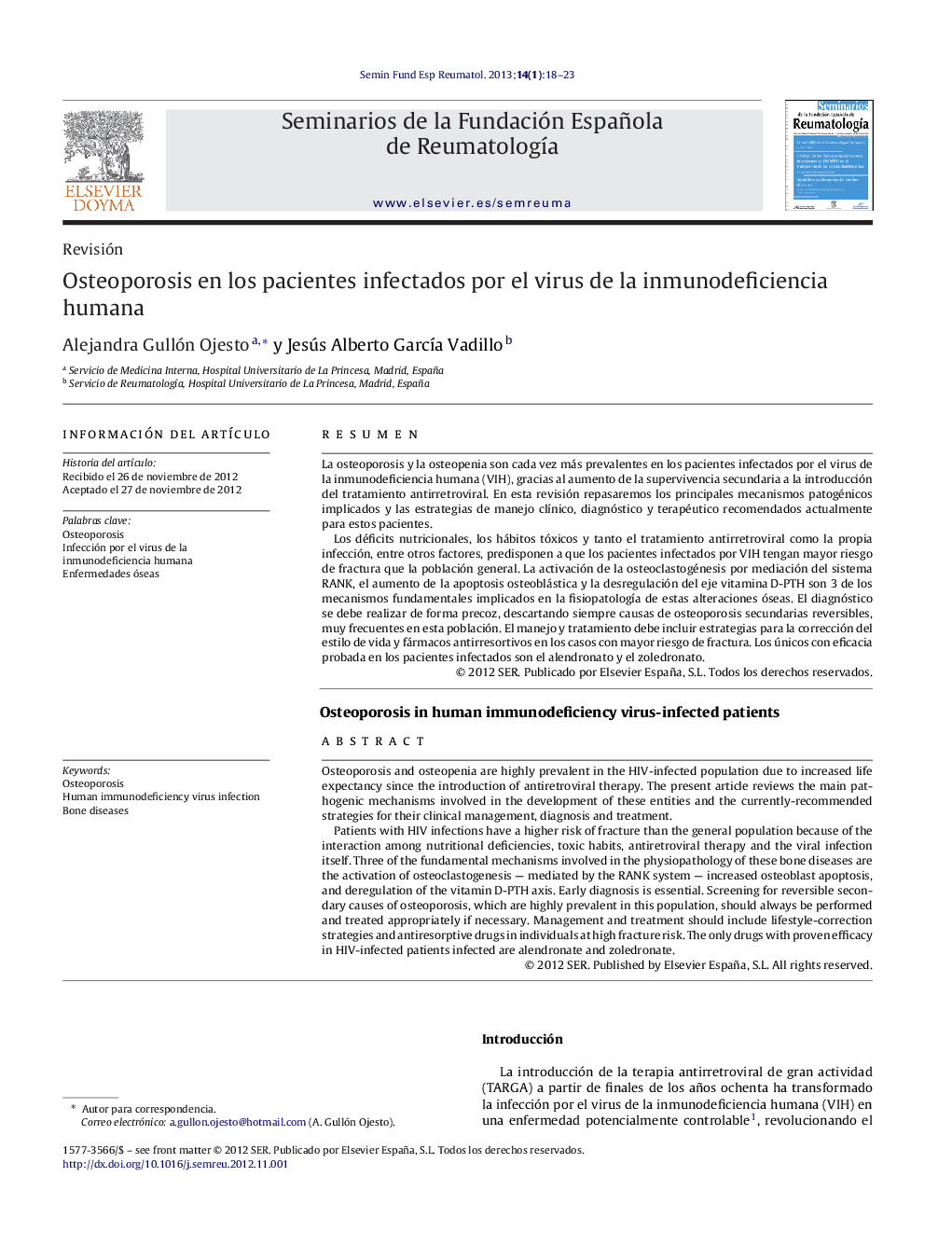| Article ID | Journal | Published Year | Pages | File Type |
|---|---|---|---|---|
| 3391023 | Seminarios de la Fundación Española de Reumatología | 2013 | 6 Pages |
Abstract
Patients with HIV infections have a higher risk of fracture than the general population because of the interaction among nutritional deficiencies, toxic habits, antiretroviral therapy and the viral infection itself. Three of the fundamental mechanisms involved in the physiopathology of these bone diseases are the activation of osteoclastogenesis - mediated by the RANK system - increased osteoblast apoptosis, and deregulation of the vitamin D-PTH axis. Early diagnosis is essential. Screening for reversible secondary causes of osteoporosis, which are highly prevalent in this population, should always be performed and treated appropriately if necessary. Management and treatment should include lifestyle-correction strategies and antiresorptive drugs in individuals at high fracture risk. The only drugs with proven efficacy in HIV-infected patients infected are alendronate and zoledronate.
Keywords
Related Topics
Health Sciences
Medicine and Dentistry
Immunology, Allergology and Rheumatology
Authors
Alejandra Gullón Ojesto, Jesús Alberto GarcÃa Vadillo,
